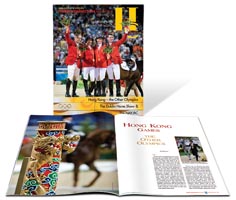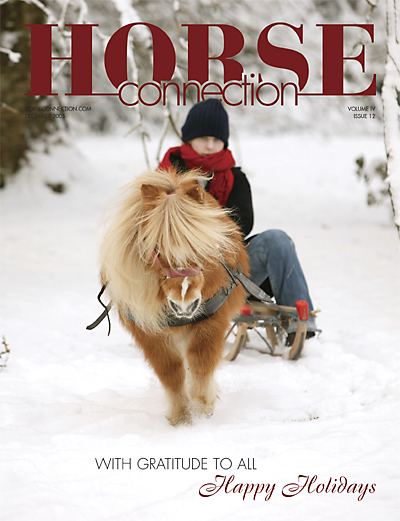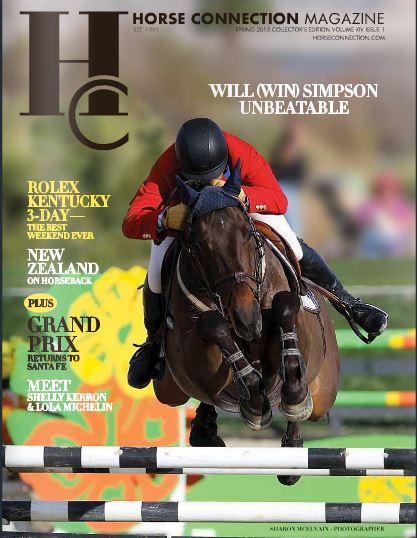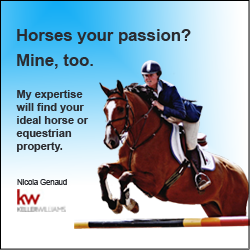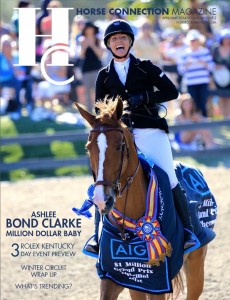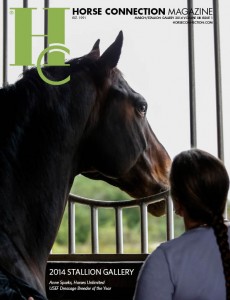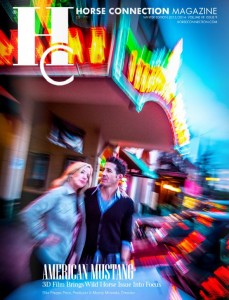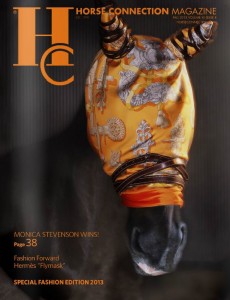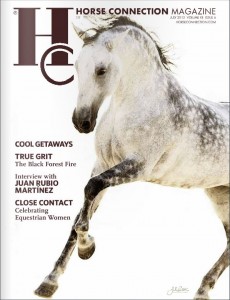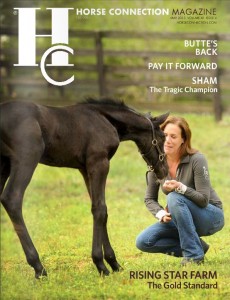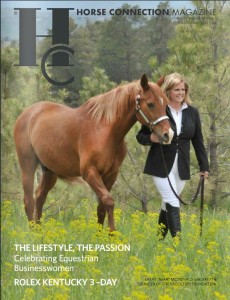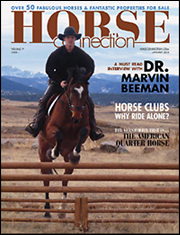
Citizen of the West – An interview with Dr. Marvin Beeman – January 2005

geoff young
Some men are admired for the road they take through life. Personally, I admire the way a man travels that road. Dr. Marvin Beeman has traveled his life’s road on horseback, and along the way became a treasure of the state he loved.
On January 12th, George Marvin Beeman, D.V.M, of Littleton, will accept the prestigious 2005 Citizen of the West award, which is a highlight during the opening of the National Western Stock Show. Chosen by a committee of community leaders, the Citizen of the West award is given to a person who exemplifies the spirit and determination of the western pioneer. They couldn’t have chosen a better example of that spirit than Marvin Beeman.
Marvin Beeman is known worldwide as the consummate horseman’s horseman. His expertise in equine health and conformation is internationally recognized. He has been inducted into the American Quarter Horse Hall of Fame, the International Stockman’s Hall of Fame, and the American Farrier’s Association International Horseman’s Hall of Fame. He has served on numerous national committees, was awarded the American Horse Council’s distinguished service award, Colorado’s Veterinarian of the Year award, and the list goes on and on.
Dr. Beeman is a fourth generation Coloradoan with family roots in Sedalia, Colorado. He was raised in Highlands Ranch, when it was a ranch, on the site of the Arapahoe Hunt Club, of which he was a gateboy at age ten, wore scarlet as a whip for 42 years, and succeeded his father as huntsman. He has hunted, exercised, bred and doctored the hounds ever since.
The Arapahoe Hunt was an important part of Beeman’s early life, and it continues to this day. His early experience with the hunt fostered his interest in equine veterinary medicine.
Beeman’s involvement with the Round Up Riders of the Rockies is very close to his heart. For 41 years he has been with this group and this year was honored as the rider with the most years. Dr. Beeman received the coveted Round Up Riders of the Year award which has only been given to two previous riders. The award was given for his veterinary involvement with the United States Olympic Stadium Jumping Team at the 1984 Los Angeles Games. He managed the health and rehabilitation of Gold Medalist jumper, Calypso, during the three years prior to the games. Calypso was one of the greatest show jumpers in U.S. history and Dr. Beeman considers his involvement with Calypso and rider Melanie Smith Taylor, “the most exciting, challenging, and rewarding experience of my professional career.”
Three days after receiving his degree in veterinary medicine from Colorado State University in 1957, he began practicing at the Littleton Veterinary Clinic where he continues to practice today. Because of his efforts, the clinic prospered and grew into the Littleton Large Animal Clinic Equine Hospital and Referral Center. This nationally and internationally recognized clinic is where Dr. Marvin Beeman sat down with Horse Connection to talk about his award, his state, and his life.
HC: Congratulations on receiving the Citizen of the West award. After all of the Hall of Fame inductions, and the numerous awards over the years, what makes this award particularly special?
Dr. B: I think for being recognized as a citizen of the west and of Douglas County. For making the decision to come back home to practice and having it materialize to the level that it has, has been extremely gratifying. The Citizen of the West certainly defines me as far as my feelings go. I did three things that aren’t supposed to work. One is to come home to practice, two is to drive a pickup truck, and three is to be an equine practitioner. It all worked out and I’m extremely grateful.
HC: As a fourth generation Coloradoan, you’ve seen enormous change and growth. Colorado isn’t what it used to be. Do you have any thoughts on what it is that has enabled Colorado to hold onto and maintain such a strong horse identity and industry?
Dr. B: It is the versatility to be able to ride in the mountains and the plains. And the fact that families used horses on their ranches and that there are many working ranches still around. Coupled with that is the economy. Denver developed the economy to support the horse activity. Horses here are generally free of the conditions that lower altitude and higher humidity have on horses. We had a real active racetrack here, and the racing people liked to come here and race. There weren’t the respiratory issues that other places had. It’s mild enough that you don’t have adverse weather very often. The general environment of Colorado seems to be conducive to people that want to be aggressive. It takes some aggression to be involved with horses. It is not a passive thing.
Colorado, with the hub being Denver, is a major island in the horse industry and I think that’s played an important part. If you have a horse on the east or west coast, the horse goes up and down the coast, so Denver is kind of an island between those two areas. The horses here don’t move too far away from the area as far as changing ownership and what not, and that generates a deep interest in the horses.
HC: You have been the Joint Master and Huntsman of the Arapahoe Hunt since your father retired after serving 53 years. It has been an important part of your life from the age of ten. What is it about hunting that has been instrumental in the quality and foundation of your life?
Dr. B: First off, I’ve been in the hunt longer than since I was ten. First time I can remember going hunting, I was four, except my dad wouldn’t let me go after the coyote and sent me back with a couple of ranch cowboys. I remember how angry I was. I guess I just assumed that I would be hunting my whole life.
The hunt has been an institution for me. Not only did it set my foundation in horses by being around them every day, but also I saw them from birth to necropsy, because that was the main source of food for the hounds. I got to see the insides of a horse on a weekly basis and that sparked my interest. I was able to see them born, break them to ride and then hunt on them. It made me appreciate their magnificent athletic ability. As a little boy I was fascinated by the conformation of horses. My father was an astute horseman but didn’t articulate that knowledge like modern day trainers do. In 1944, he rode and trained 14 two-year-olds. Started them in a flat saddle.
I learned responsibility at an early age because of the hunt. I actively hunted by age six, but I helped with the hounds; exercising and feeding them. The war took away a lot of help so there was no choice but to just get in and work hard. At an early age I was moving brood mares by myself because my dad had to work the main part of the ranch, getting the cows in and milking them. Today, you give that kind of responsibility to a child it would be considered child abuse. I will say though, that it generated a close family.
I was 18 years old before I knew you could make a living other than by being on a horse. What’s fascinating to me is that my ability to ride kept me from doing normal ranch chores. I didn’t go to school on hunt days from the time I was eight through the eighth grade. Every Wednesday, Sunday and then we added Saturdays; we would hunt. I was on the football team and I remember playing a game on Friday afternoon and would get the hell beat out of me. I would then have to get up at four Saturday morning and be hunting at six and I was so sore from the game. Mother and dad never had to tell me not to stay out late at night.
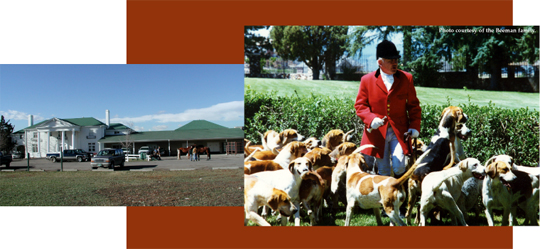 HC: You’ve mentioned that the most exciting time in your career was when you were the vet for Show Jumping Hall of Famer, Calypso. How did you get together with Melanie Smith and end up managing the health of this Olympic Gold Medal athlete?
HC: You’ve mentioned that the most exciting time in your career was when you were the vet for Show Jumping Hall of Famer, Calypso. How did you get together with Melanie Smith and end up managing the health of this Olympic Gold Medal athlete?
Dr. B: My wife and I were invited to an after horse show party at Preston Smith’s house to meet the judge. I didn’t really want to go because my experience with eastern judges was that they were always berating us about how archaic and pioneer-like we were out here in the west with horses and hunter jumpers and how bad our horses were. I didn’t want to go have to listen to that, but my wife said, ‘mind your manners,’ and we went.
The judge walked up and it was Melanie Smith and I had no idea who she was. Everybody else did but I had no clue. We talked and got on really well. She wanted to develop a sport horse breeding program for the fella she worked for, Mark St. James. She mentioned whom she was considering hiring and I said that’s a mistake. I told her CSU is up the road and they’ve been doing this for several years and have some really good people. She asked me if I would introduce her to those people and I did. This was in the fall. That spring they called me from CSU and said that some folks were here from Windrush Farms looking to buy some brood mares. It turned out that it was Melanie and she asked me if I would go with her to look at these horses. So my wife and I and Melanie and her mother went driving out to look at these horses and we started talking about conformation. Melanie asked me how I knew so much and I gave her a run down of my experience and qualifications.
They left and then later that year in September I got a call from Melanie. Calypso had hurt himself at Spruce Meadows, where they had just held the Masters, and she wondered if I would come up and take a look at him. This was in 1981 and there were a lot of issues because they were getting ready for the Olympics. I went out to Connecticut and found that Calypso had broken off the end of his splint bone. It wasn’t a major issue.
Later on that year I was in New York with my wife, taking our daughter to college, when the people at Windrush Farms asked if they could pick us up, bring us out to the farm and have me give a lecture on conformation. So we went out to the farm; I looked at their horses and gave the lecture. After that they asked me to come back every 60 days and go over the horses and manage their program. So that’s how I got started with Calypso.
How I ended up at the Olympics was interesting. I was on a ride with the Round Up Riders north of Steamboat Springs when this ranger truck came driving up. The ranger called out, ‘I’m looking for Dr, Beeman. I have a message from Melanie Smith.’ Turns out that Calypso was extremely lame and Melanie was hysterical and had a plane in Steamboat waiting to take me to L.A. I got on the plane wearing my western riding clothes.
That evening I was looking at Calypso. It was around midnight and he was three out of five lame. I started working on him Thursday. Saturday morning the team coach, Frank Chapot, came in and said that Calypso has to jump tomorrow or he’s going on reserve. He turned around pretty good. They actually clipped him with a nail when they shod him. I said to the farrier, you heard what the coach just said. Can you keep a shoe on with just four nails? He said I think so; and damned if we didn’t get to jump on Sunday. Frank Chapot said, ‘what did you give that horse?’
When Calypso went clean in that last Olympic round, 75,000 people were cheering. I still get choked up thinking about it. I’m convinced Calypso could have won individual gold if not for that German judge faulting him on the water jump. The judge stood there a long time and then faulted him. He thought he hit the tape. There wasn’t a ripple in that water. It was the most exciting time of my life.
HC: You claim to be semi-retired, yet you practice four and a half days a week at your clinic and still hunt and ride at the age of 71. Do you ever envision a day when you won’t be on or around horses?
Dr. B: Oh, I’m sure it will happen sooner or later. I won’t stop until I’m forced to. I have such a good time riding. I will tell you though; I won’t continue to ride if I can’t be fair to a horse. They are the greatest mammalian athletes, God ever created.

